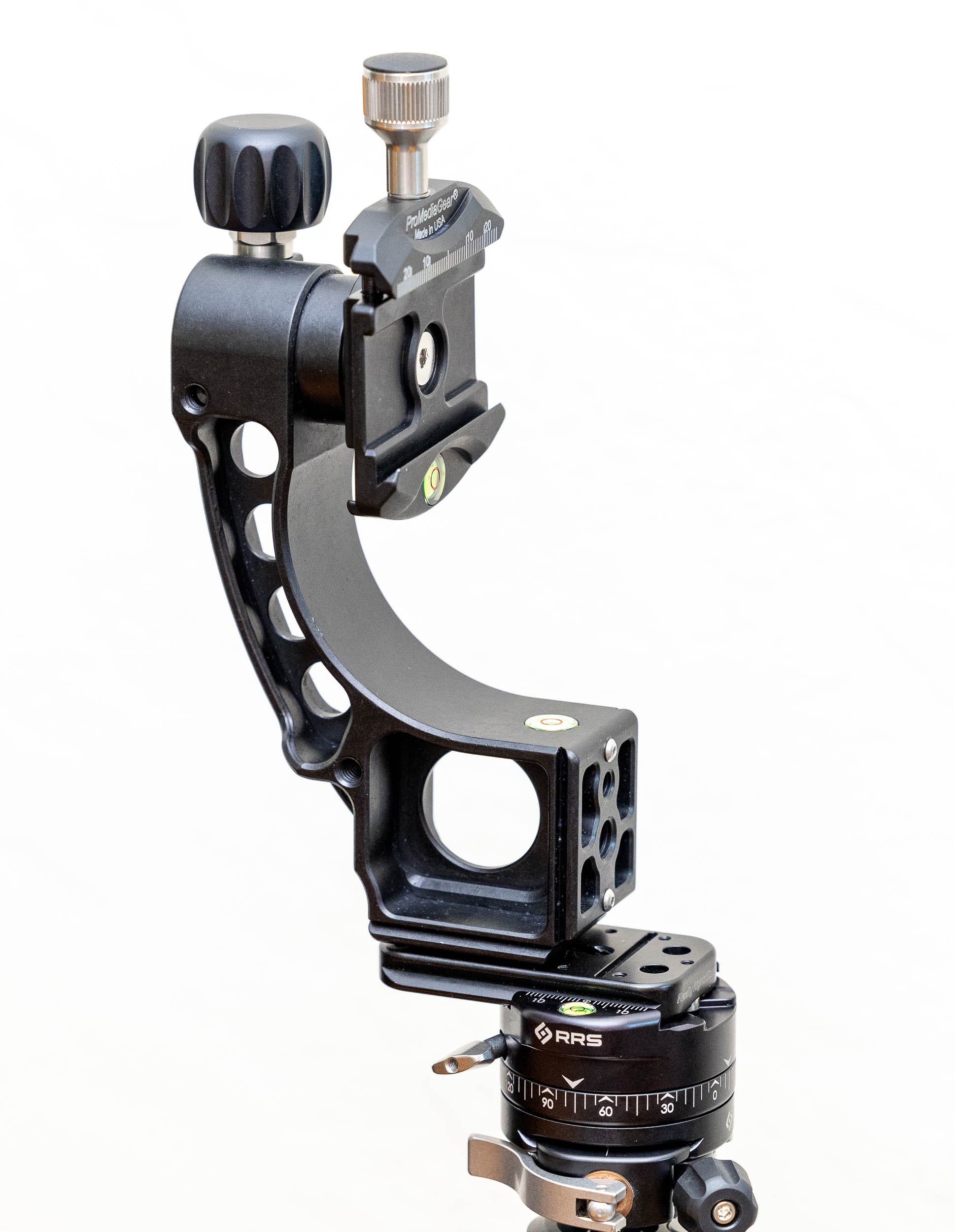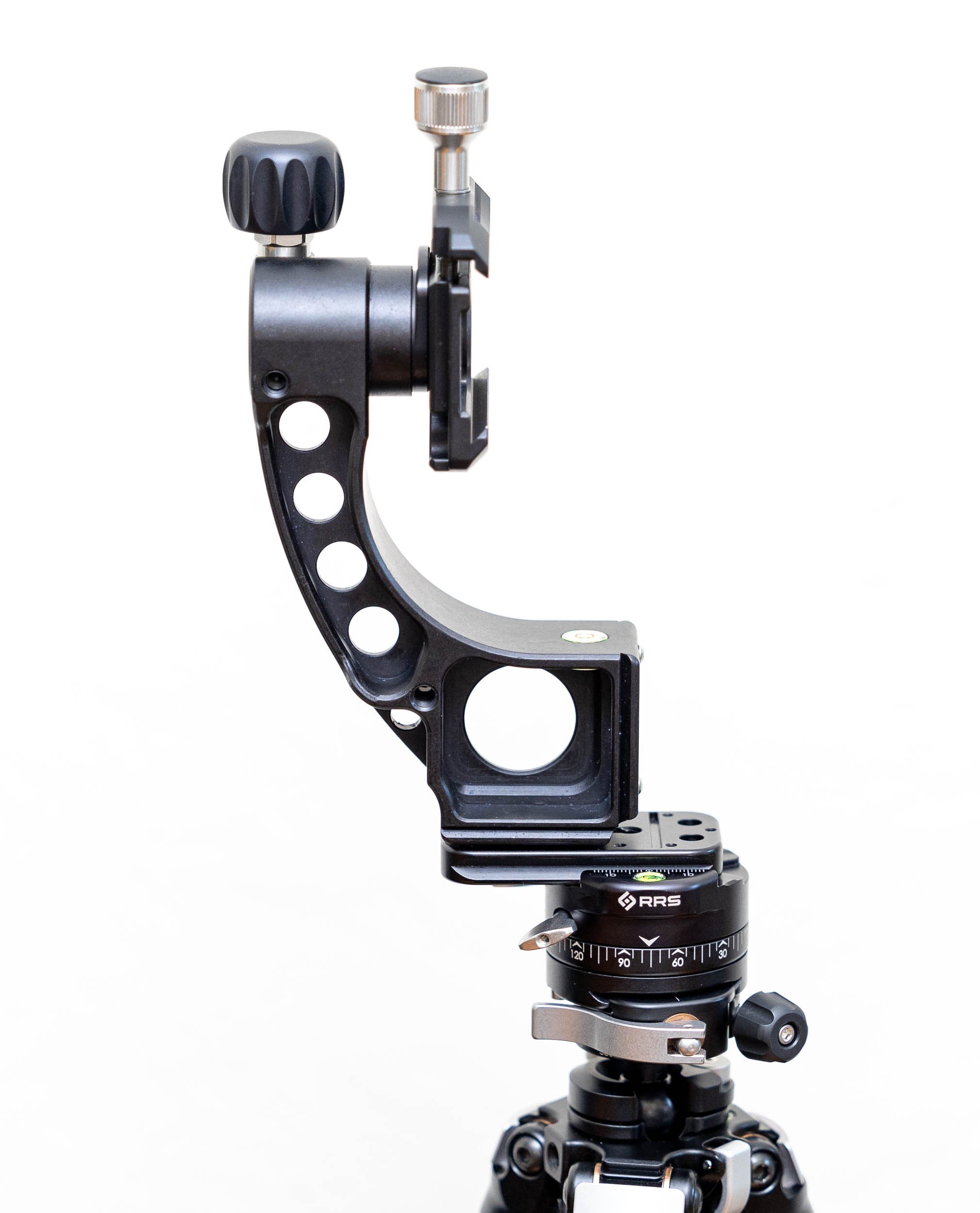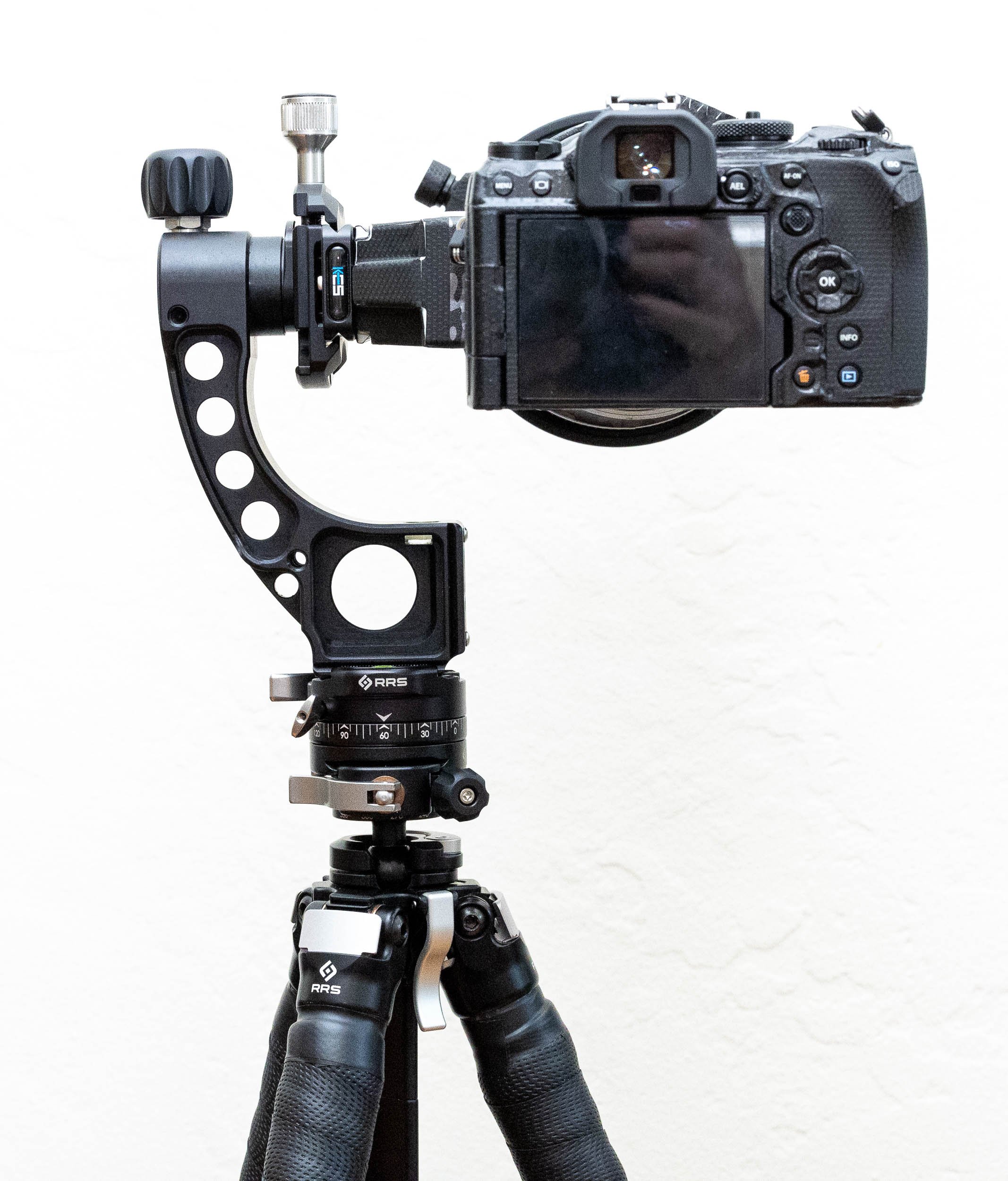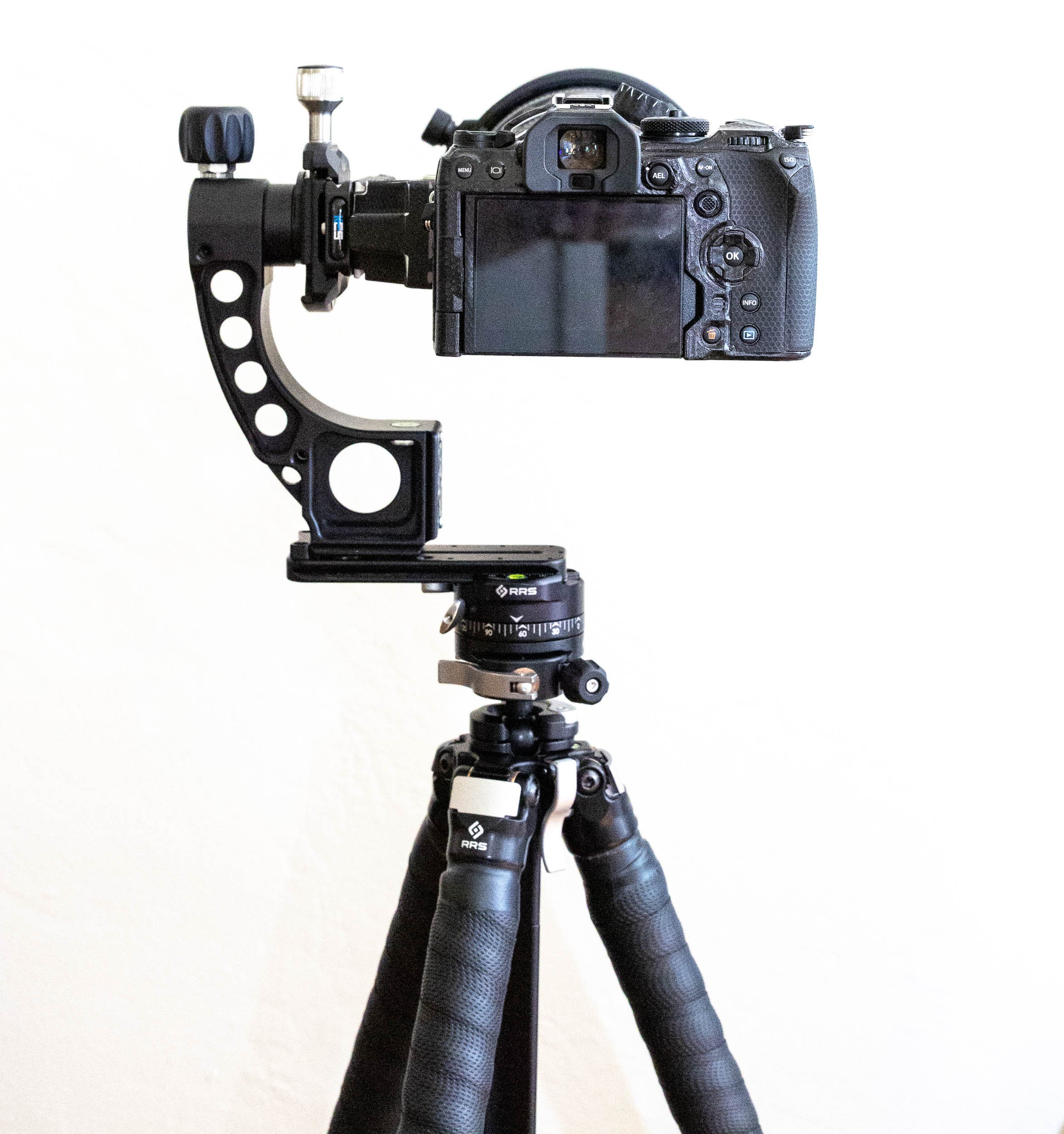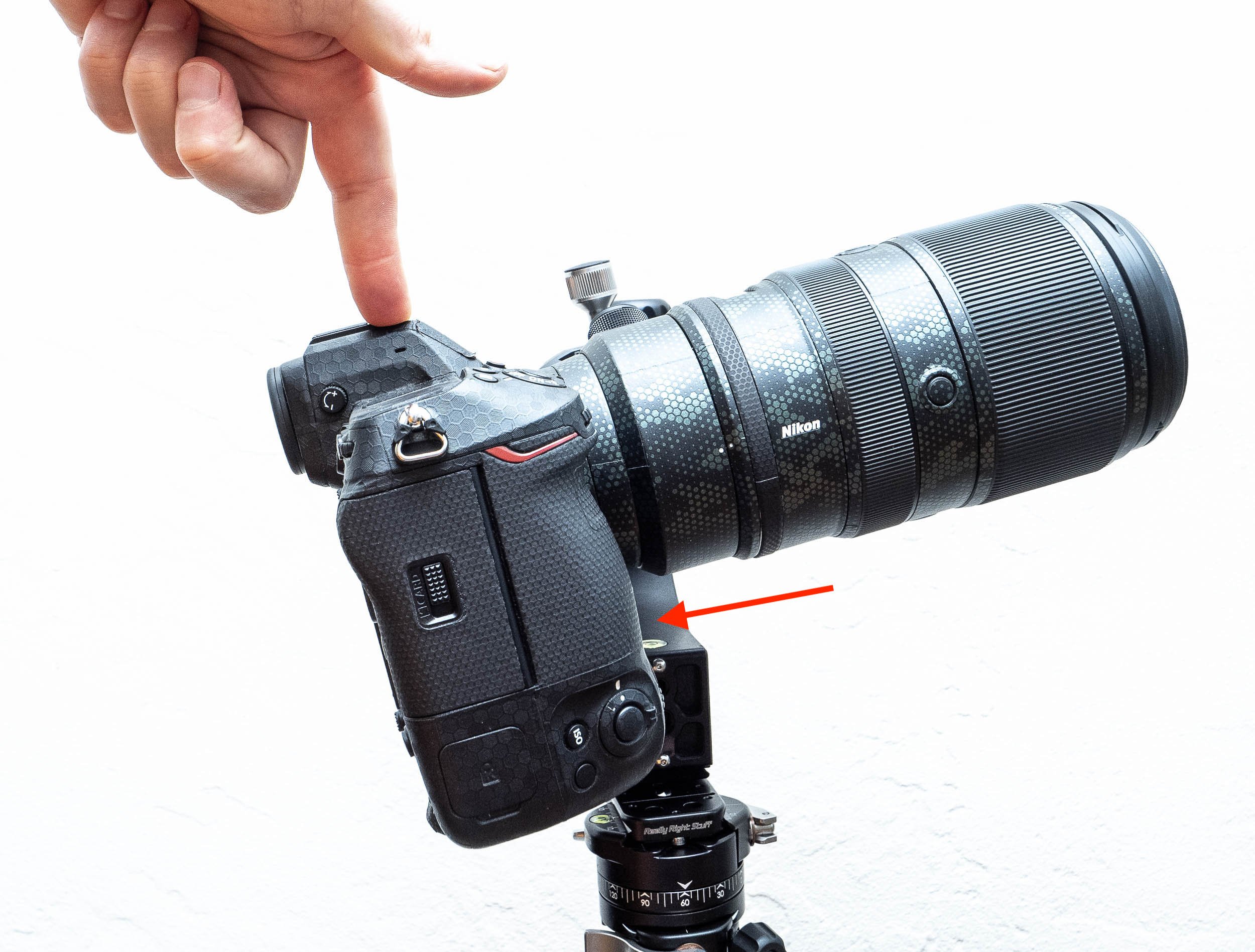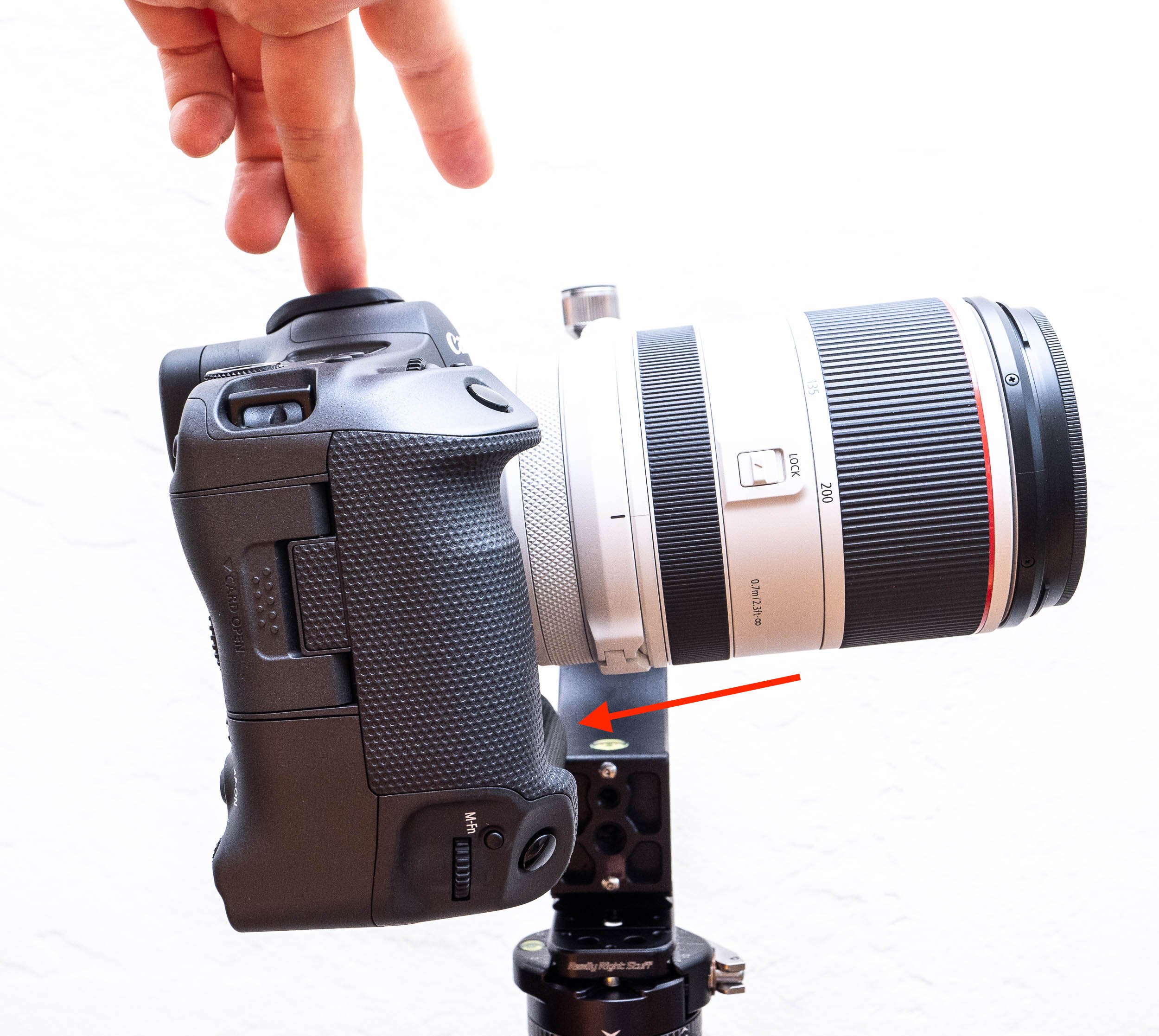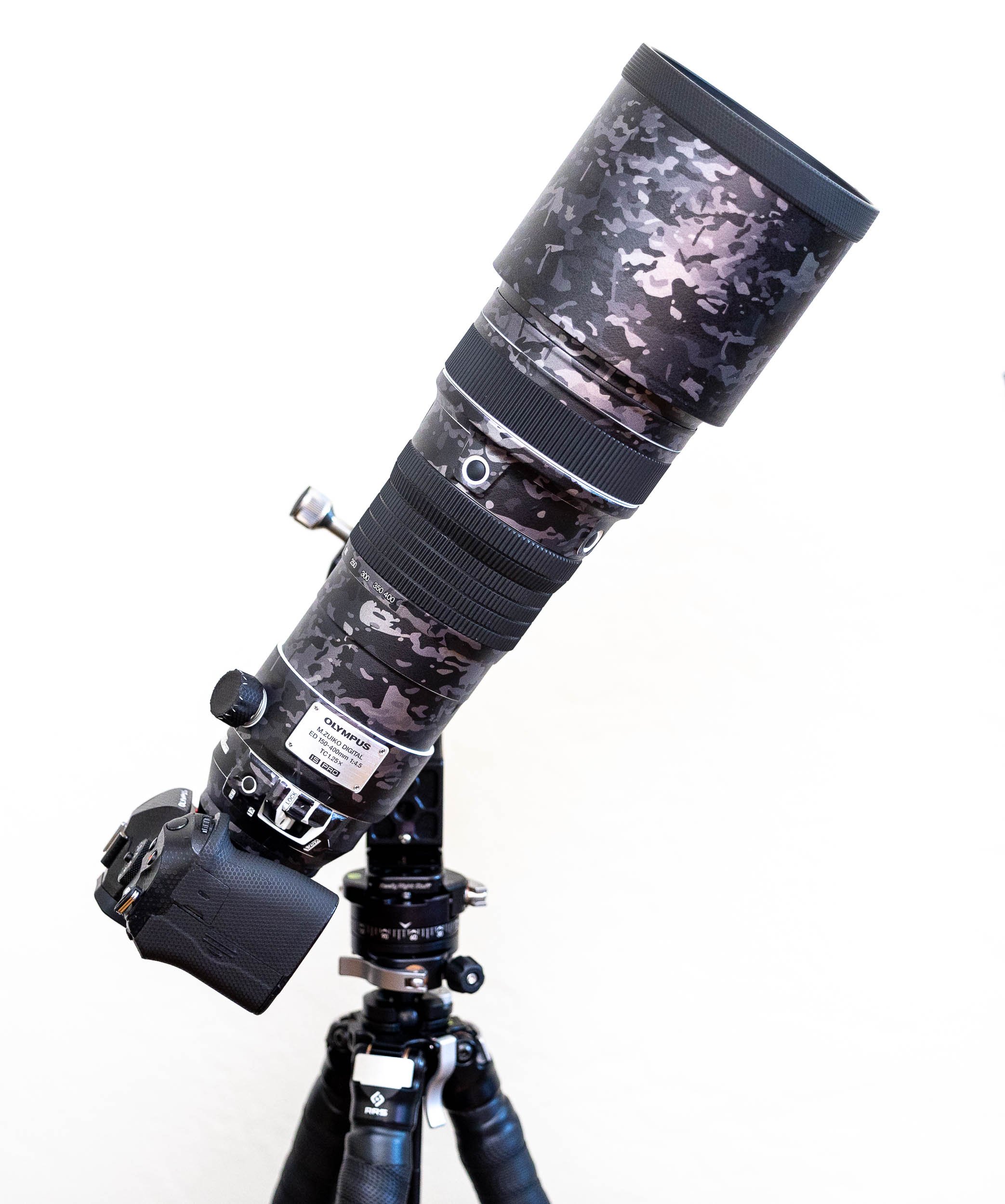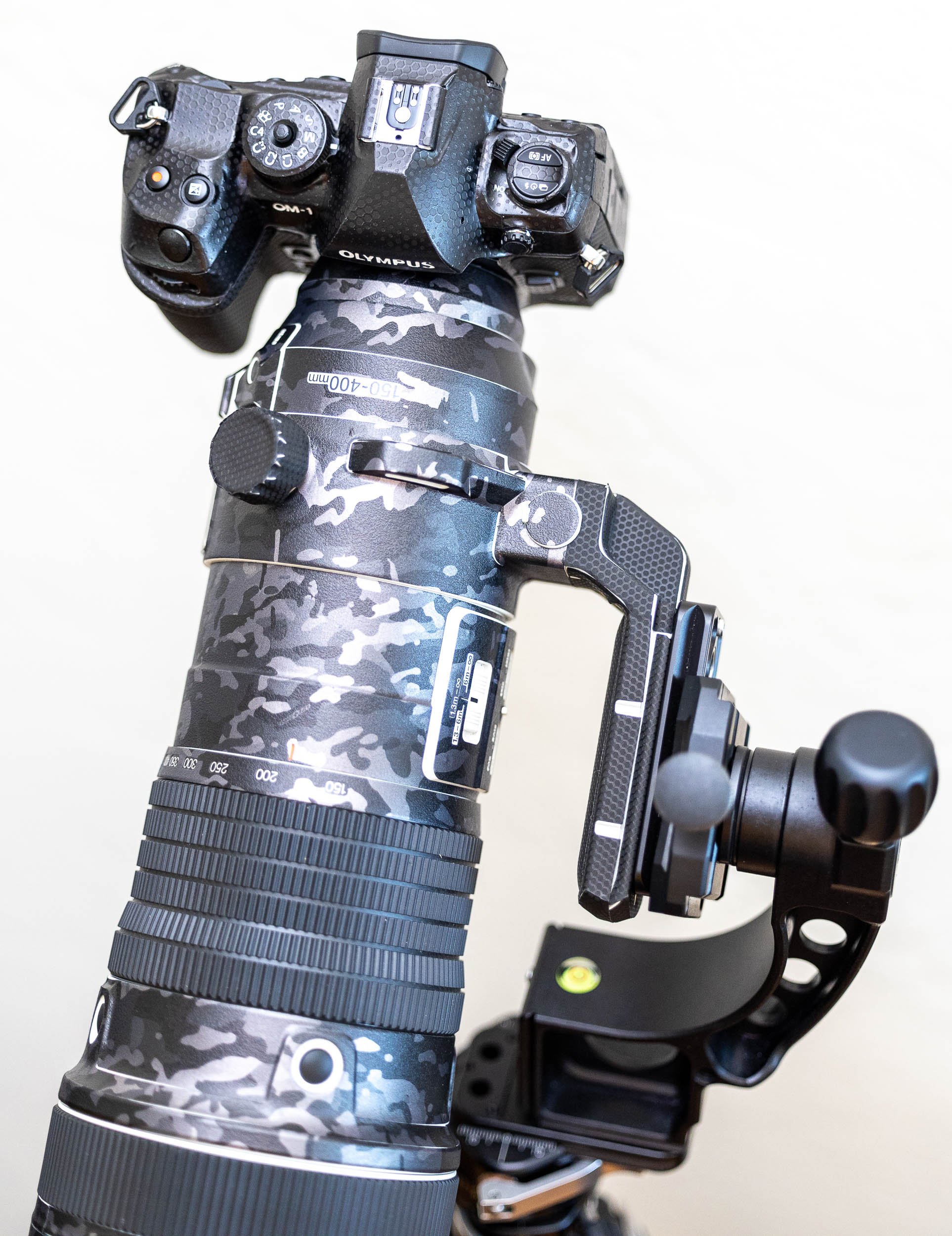ProMediaGear GT2 Tomahawk Gimbal Head Accessory Review
Introduction
With each passing year, many camera lenses and bodies are getting lighter and more compact, and so having accessories that are equally light and compact is always welcome. ProMediaGear’s (PMG) new $399 Tomahawk GT2 fits the bill, weighing just 434 grams, but promising full gimbal functionality when attached to a monopod or a ballhead.
PMG refers to the GT2 as a “Gimbal Head Attachment”, which I think is accurate since it is not a true gimbal replacement by itself. The GT2, like its larger GT1 sibling, the GT2 is a “sidekick-style” gimbal, intended for use as an add-on unit to a ballhead. It can also be placed on a panning base, or used on a monopod. It’s ideally suited for those who occasionally want the use of a gimbal but without the extra weight of conventional gimbals.
The GT2 is far more compact than the original GT1, but still has a massive 50 lb. weight capacity. As someone who is always interested in lightening the load without compromising on quality or functionality, I was excited to put this new gimbal attachment to the test.
This product was purchased directly, and this review is not sponsored by PMG. Note, this page uses affiliate links. If you buy a product using the link, I receive a small commission which goes 100% towards keeping this site alive and running. Your patronage is appreciated!
Purchase the GT2 Tomahawk Here
Found this review useful?
Consider a donation to the site:
Build quality and function
Having used PMG products before, I’ve come to expect a high level of craftsmanship, machining, and functionality. Their products are not cheap, but are USA-made to the highest standards and built to last.
Thankfully, the GT2 shares this pedigree, employing some of the best CNC machining I’ve seen in a camera accessory. It’s an impressive and substantial chunk of metal, yet also much more compact than the original GT1 was. Thanks to hollow cut outs and chamfering, it weighs only 434 grams, and despite that, it feels bombproof.
The bearings in the tilt clamp are super smooth, and tension also can be modulated with minor adjustments to the lock knob. A great aspect of the tilt tension is that, once set, the gimbal will not loosen up as you work with it like some other gimbals will. Simply set the desired tension and it will remain that way until adjusted again. Firmly tighten the knob, and the setup will not move. The advantages of this cannot be understated - it means the product will be safe and reliable to use in the field. There’s nothing worse than having gear smack into metal or flop down a hill because of tensioners that loosen up without you knowing on lesser quality products.
The only criticism I had of build was that I wish the lock knob had a set screw to prevent it from backing out all the way during adjustment. It takes a lot of turns to do this, so it is not likely to be an issue in the field - but it’s still something to watch out for. Some of PMG’s other products incorporate this design. Thankfully, the knob is large and easy to operate and only takes a quarter turn to loosen or tighten fully.
User Experience
To setup the GT2, one simply needs to 1- mount the gimbal to a ballhead, panning base, or monopod, 2- mount the camera lens foot in a sideways position into the arca-clamp, 3- balance the camera fore and aft, and 4- adjust the desired tension on the tilt lock knob. The GT2 can either be mounted in a horizontal or vertical position, depending on the use case. I highly recommend putting your ballhead’s arca plate in it’s 90 degree drop notch and mounting the GT2 on the side mount, because this puts the panning axis centered over the tripod. Another way to achieve this is to mount the GT2 to and arca plate and offset the gimbal from center as shown below. To demonstrate why this is important, I’ve posted a couple videos below showing what profound difference it makes to center the camera over the tripod . Notice how the eyepiece swings forward and backward when the GT2 is mounted directly over the tripod while the camera is offset. When the GT2 is mounted off-center using an Arca plate, thus centering the camera rig, the eyepiece stays in more or less the same fore-aft position, so the camera isn’t getting pulled away or towards you in use. It’s much easier to move side to side when using a gimbal than it is forward and backward, and no one likes a camera smashing into their forehead during use.
Once setup, the GT2 functions like any other gimbal, and when properly balanced, the camera will float “weightlessly” during use, regardless of the weight of the lens and camera. Gimbals are ideal when you need to stay in one position for long periods of time waiting for something to happen, or when shooting something like birds in flight from a tripod, as it allows for quicker adjustments than a ballhead. Given the low weight of the kit, it’s easier to travel with, including situations where larger gimbals would more likely be left at home.
The GT2 allows for the gimbal experience without carrying loads of extra weight. It takes up very little space in the bag, so if you don’t need a gimbal, you can simply unclamp it from the setup and stow it away in a backpack side pocket.
The GT2 has PMG’s standard screw-knob arca-plate, which has the benefit of accommodating a wide range of different arca plates (each brand can have slightly different widths). I do wish PMG offered a quick-release style plate, since a screw clamp doesn’t have the same positive feedback nor is it the fastest to load the camera onto.
One of the drawbacks I discovered while testing the GT2 is that it doesn’t necessarily play nicely with shorter lenses or gripped bodies in the standard configuration. The problem is that there is not enough clearance to allow the gripped camera body to swing forward, and it bumps into the base of the gimbal. This is mainly due to the shorter vertical height between the lens foot and lens barrel, but also the shorter vertical height of the gimbal itself. This can result in the lens plate or body bumping into the base of the gimbal as shown in the photos below (R3 with 70-200/2.8, Z9 with 100-400) preventing shooting at vertical angles.
One workaround is to tilt the ballhead top plate slightly towards you, which allows more clearance when the GT2 is used. A negative side affect of doing so with the setup I’ve shown is the panning axis is no longer level, and pans will go in an arc. Another possibility is to slide the camera farther backward in the arca plate, but then it becomes off-balance and unwieldy.
One solution I might try in the future is to mount arca clamp to a L-bracket and mount the lens in a horizontal position like a traditional gimbal head. This will allow positioning the camera farther away from the side mounted arca clamp, and hopefully clearing the base. I also reached out to PMG to see if they had any suggestions to make it work better with shorter lenses with less clearance between the lens foot and lens barrel. I’ll be sure to update this post if I discover any new solutions. The good news is that the head works just fine with longer lenses like the Olympus 150-400 supertelephoto shown below.
One other consideration is what ballhead is being used to support the GT2. I’ve shown the gimbal mounted to the RRS Ascend tripod, which has it’s own integrated ball head. Although it would make a lot of sense to use the integrated panning function on the Ascend ballhead, the Ascend’s panning base is not very smooth when using this gimbal. This has nothing to do with the quality of the GT2 nor the Ascend; this can sometimes happen when there is excess friction on the bearings off-axis, which the ballheads weren’t designed to handle. To solve this, I found I could mount a separate panning base (RRS), which allows for super smooth pans. The main drawback is obviously a little more weight, complexity, and cost.
The moral of the story is this - whether you will achieve smooth pans with the GT2 ultimately depends on the chosen ballhead or panning base, and how it fares with off axis-weight. Using the GT2 with PMG’s own BH1 ballhead, for example, is butter smooth, without needing to use a separate panning base.
Compared to alternatives
The first product that comes to mind in comparison to the The GT2 is the Wimberley sidekick. This product has been around for a while and has good reviews, but I always felt the heavier 1.3 pounds weight was too much for an add on accessory, and thus I never added one to my kit.
Another comparison could be made to Wimberley’s monogimball head. This is a relatively new design, and is also well regarded. While the GT2 is about 100 grams heavier than the Wimberly mono gimbal, in my opinion the GT2 has two key advantages: 1. It works on more than just monopods, and 2. The positioning of the tilt axis puts the camera more aligned with the center of the tripod (or monopod) for more balanced use. While I like the Wimberly mono gimbal’s simplicity, I never liked how it put the center of gravity so far off axis, meaning the user would always have to be compensating for the weight of the camera gear, which can be dangerous if you aren’t paying a lot of attention and working with very heavy gear. Putting the tilt axis up and to the left allows for a more centered balance of heavy rigs, which feels a lot more natural to me. Mounting a plate under the GT2 means you can center the lens directly over the tripod or monopod if you want to.
The other logical comparison would be a full-size gimbal like PMG’s very own Katana gimbal. The Katana is much more full-featured, has an integrated panning base, horizontal mounting, and centered pan-axis, but it also weighs over a pound more. A Katana with the side mount only clamp option is probably a good compromise and a better choice if you want to use a gimbal regularly. If you are working with a ballhead 75% or more of the time, but occasionally want a gimbal, the GT2 would probably be the choice.
While the GT2 is technically a “sidekick” style gimbal, the addition of a separate panning base, or use of the gimbal on a ballhead allows for a true gimbal experience, with independent pan and tilt function. One benefit of using the GT2 on a ballhead is the added advantage of the ballhead acting like a leveling base, allowing one to level out the panning axis, which is a key to gimbal setup.
Another option would be a Flexshooter hybrid ball head, which offers a gimbal-like experience in a ballhead form factor, but the GT2 setup allows for smoother tilting action, as well as independent pan and tilt control when used on a panning base or ballhead versus the Flexshooter’s single control to lock out the head.
PMG GT2 mounted to a monopod
When used on a monopod, it’s best to tilt the monopod slightly forward, which eliminates the fore-aft swinging motion when the gimbal is turned.
Conclusion
I’m a strong believer that if gear is too heavy and cumbersome, it’s going to stay at home unused. This is especially true when traveling abroad, where bringing tons of metal chunks does no one favors with baggage allowances 😆.
The GT2 can completely replace a full size gimbal, which can easily run a kilo or heavier, but one does have to take into account the other bits to make it work (i.e., ballhead or a panning base). In many cases, I’d be happy to make a few compromises in functionality and/or workarounds to have a smaller, modular setup. It can be put on a tripod or monopod when the situation calls for it, but quickly be removed and stashed away in a side pocket when not needed.
This gimbal accessory is not cheap, but if you want one of lightest gimbal setups on the market, with some unique and innovative traits that you can’t find anywhere else, this model should definitely be considered. One big consideration is whether or not it will work with your setup. I have yet to find a way to get it to work well with shorter telephoto lenses, but with longer lenses it works fine. I’ll be sure to update the post if I learn of any workarounds.
In the future, it’d be great to see PMG design a mini-gimbal that incorporates the smaller size and lower weight of the GT2, but with the addition of an integrated panning base and enough offset to put the lens pivot point dead center when used on a tripod.
All in all, GT2 is another solid product from PMG that many types of photographers should consider adding to their workflow. Long lens shooters will benefit from a fully-functional, lightweight gimbal setup, and landscape shooters could easily set it up to do panoramas. I’m looking forward to continued testing with the gimbal.
Pros
Simple but effective design
Works with many types of ballheads
CNC machining is a work of art
Versatile mounting options
Tilt action is smooth and frictionless, and can be easily modulated to one’s desired tension
Super lightweight but also capable of supporting a massive 50 lb weight capacity
Takes up little space in the bag
Offers true “weightless” gimbal experience in a small package
Solid choice for those who primarily use bullheads but occasionally want a gimbal
Integrated bubble level
Unlike similar products, the arca clamp is offset from the base, which provides more centered balance when using on tripods/monopods
Nice 1/4-20” accessory threads for attaching things like magic arms, monitors, etc.
Cons
No option for a quick release Arca clamp
It can be a little complicated to figure out how to integrate the head with existing gear (i.e., ballheads, etc.)
Not a true gimbal replacement, requires other (potentially expensive) parts to function as intended
Tilt lock knob backs out all of the way and can be lost if not careful
PMG should sell a panning base so that you aren’t forced to buy one of their ballheads to use it on a tripod, or better yet, offer it with the option of an integrated panning base and horizontal mount.
Smaller lenses and gripped bodies might interfere with the base given the short height of the gimbal, which must be addressed by either tilting the entire gimbal towards you or converting it to a horizontal mount (which is not a standard accessory)
To purchase the PMG GT2 Tomahawk, head over to ProMediaGear:

